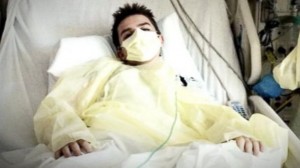Category Archives for Industry News
Thank You!
Celebrate Healthcare Quality Week (HQW) with us by letting your Healthcare Quality and Patient Safety Professionals know you appreciate them.
 October 19-25 is National Healthcare Quality Week, that time when we acknowledge the hard work and dedication of Quality staff all across the country. During the hustle and bustle of a normal day at any hospital, the efforts of these faithful folks can be easily overlooked. But, behind the scenes, these unsung heroes help to keep patients safe, and strive to continually improve the quality of care hospitals and healthcare organizations provide.
October 19-25 is National Healthcare Quality Week, that time when we acknowledge the hard work and dedication of Quality staff all across the country. During the hustle and bustle of a normal day at any hospital, the efforts of these faithful folks can be easily overlooked. But, behind the scenes, these unsung heroes help to keep patients safe, and strive to continually improve the quality of care hospitals and healthcare organizations provide.
The National Association for Healthcare Quality (NAHQ) has provided some materials to help you host your own celebration of HQW, including Posters, and customizable templates for Lunch and Learn presentations and Press Releases.
So, for all they do… we at Prista would like to say to all of the Quality Professionals out there, “Thank You!” and we encourage you all to do the same.
For additional information on HQW visit the NAHQ website.
ActionCue Clinical Intelligence can dramatically improve your Quality and Patient Safety.
ActionCue subscribers are so amazed by the results they are talking about it. To find out how much easier Quality and Patient Safety can be get a demo of the healthcare industry’s leading patient safety software today.
Don’t worry. Be happy… and improve patient safety/medical care.
Hospital Enacts New Mandatory Happy Hour for Employees
 “Go figure out the best way to improve patient safety and medical care at our hospital.” was what CEO of Memorial Hospital in Boston, Massachusetts, Dr. Gina Stockdale, posed to her panel members. A junior panel member in the back of the room raised his hand and said, “How about a happy hour for employees?”
“Go figure out the best way to improve patient safety and medical care at our hospital.” was what CEO of Memorial Hospital in Boston, Massachusetts, Dr. Gina Stockdale, posed to her panel members. A junior panel member in the back of the room raised his hand and said, “How about a happy hour for employees?”
It may seem ridiculous that down-time and socializing outside the hospital could have measurable positive effects on patient care and performance inside (it certainly did seem silly to some on the panel, as laughter initially followed the suggestion). But, research is showing that socializing and communication can be extremely beneficial to workplace performance. For Memorial Hospital, who as of August 1st has instilled a mandatory 30-minute happy hour session for employees, close collaboration and communication between healthcare staff and teams have already improved, and with it — patient care.
“Numerous studies show that communication between colleagues improves performance and patient outcomes,” said Janet Wilkerson, a patient safety analyst. “It only makes sense to create an atmosphere that promotes interaction and discussion in the hospital. I can’t think of a better way to do that than a happy hour.”
Though their methods are controversial, and we would never endorse mixing alcohol and medical care, Memorial Hospital has made a connection to a theme that we at Prista would like to continue talking about, “Happier staff makes for better care.”
Increasing communication and reducing the stress of managing Risk, Quality and Performance initiatives can and will improve workplace satisfaction and patient care. These key areas (Risk, Quality, Performance and team communication) are at the heart of the ActionCue Clinical Intelligence application.
To read the full article click here: http://www.gomerblog.com/2014/08/happy-hour/
For more information on how the ActionCue hospital risk management software can make you happier or to schedule a demo visit pristacorp.com.

Happiness: The path to better hospital performance
A paper published by Alex Edmans of the University of Pennsylvania in the Academy of Management Perspectives; vol. 26 no. 4, titled “Why Happy Workers Should Make Shareholders Smile” the author describes how job satisfaction pays off with better-than-expected earnings and higher stock returns.
So, I was wondering — it has worked in other industries, why not in healthcare?
Cultivating a happy workforce results in more than just feel-good meetings and upbeat corporate retreats. According to this paper, satisfied employees actually raise the worth of their firms. Analyzing the performance of Fortune’s “100 Best Companies to Work for in America” over a 28-year period, the author found that these firms generated higher yearly stock returns than comparable companies not on the list. They also systematically beat financial analysts’ earnings estimates, an indication that job satisfaction is an important variable.
Too often in hospitals and healthcare organizations, personal job satisfaction is not considered an important data point to providing higher quality of care, improving patient outcomes or reducing medical costs. Instead, more work is heaped on already over-burdened staff and they are told, “…do more, with less.”
All to often it is the patient who pays the price of the shrinking amount of time that nurses and doctors have to spend per patient. What is most unfortunate is when the systems that were developed to make their jobs easier, actually increase the burden — without providing any discernable benefit.
In the past these home-grown systems were all a Risk, Quality Manager had to choose from. But thankfully there are now better solutions that can not only provide better results, but also make their job easier — dare I say, happier?
It should be no surprise that a happier worker is a more engaged and effective worker. So, if you don’t have happy thoughts when you think about your current Risk/Quality Management, Performance Improvement system, then you should consider why.
Be happy. Get ActionCue Clinical Intelligence.
Read the full article here.
To learn more about the ActionCue hospital risk management software click here.
Temporary Paralysis and Other Things You Need to Know About Enterovirus
————————————————————————————————————————–
There is still a mystery surrounding Enterovirus cases spreading around the country. Now the CDC is investigating possible connections between the virus and temporary paralysis. Although its symptoms are similar to the common cold, its rapid progression and severity makes it very different — with many cases ending up in Intensive Care. Hundreds are hospitalized in 11 states, at higher risk are children with asthma.
Here are some important things you should know:
• Highly contagious, spreadable by cough or sneeze, and also can live on surfaces. But full knowledge of how is spreads is unknown due to lack of scientific studies on the virus.
• Starts like common cold; Runny Nose, Coughing, sneezing and fever
• Progresses rapidly; difficulty breathing, possible loss of consciousness (look for wheezing, shortness of breath or difficulty speaking)
Apparently this isn’t the first case of an outbreak of Enterovirus (EV-D68). According to a 2011 CDC report, from 2008 to 2010 there were clusters of Acute Respiratory Illness associated with EV-D68 across multiple continents including Asia, Europe and the United States. While it’s not the first time however, health officials are scratching their heads as to why it has reemerged… and with such voracity.
Particularly alarming is the lack of specific treatment for the virus and its, now possible, connection to acute onset of focal limb weakness — or temporary paralysis. Instead, health officials are tasked with treating the symptoms of the infection, often requiring hospitalization.
For the most current information on the virus, and to find out what is being done about it, visit the CDC website.
The CDC has a specific link for Healthcare Professionals on Evaluating, Reporting, Testing and Infection Control Recommendations here.
Ebola Is Here — CDC Confirms first Ebola Case Diagnosed in US

The Ebola virus. Photograph: Frederick Murpy/CDC/EPA Source: http://www.theguardian.com
CNBC is reporting that the Centers for Disease Control (CDC) announced on Tuesday the first officially diagnosed domestic case of the Ebola virus within the US.
Officials say, the yet-as identified patient is under “strict isolation” in Dallas, Texas, apparently confirming a statement issued on Monday by the Texas Health Presbyterian Hospital of Dallas.
Monday night Texas Health Presbyterian Hospital in Dallas released the following statement:
“Texas Health Presbyterian Hospital Dallas has admitted a patient into strict isolation to be evaluated for potential Ebola Virus Disease (EVD) based on the patient’s symptoms and recent travel history. The hospital is following all Centers for Disease Control and Texas Department of Heath recommendations to ensure the safety of patients, hospital staff, volunteers, physicians and visitors. The CDC anticipates preliminary results tomorrow (Wednesday).”
In a press conference, CDC Director Tom Frieden said the patient in question had been traveling in Liberia, where he may have contracted the disease.
“It is certainly possible that someone who had contact with this individual…could develop Ebola in the coming weeks,” Frieden said, but added that “there is no doubt in my mind that we will stop it here.”
According to the CDC website, “The 2014 Ebola outbreak is the largest in history and the first Ebola epidemic the world has ever known.” The virus is know to be transmitted by contact with blood or body fluids (including but not limited to urine, saliva, feces, vomit, and semen) of a person who is sick with Ebola. Objects, such as needles and syringes, that have been contaminated and animals that are infected are also know means of transmitting the virus. At this time it is not believed that Ebola is transmitted through the air or by water.
There is currently no known treatment or cure for the virus.
Complete information on the Ebola Virus can be found on the CDC website at CDC.gov.
The CNBC story can be found here.
Dallas CBS News Report.
Could Feds enact emergency measures?

